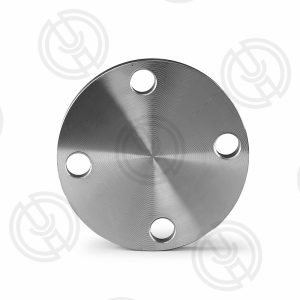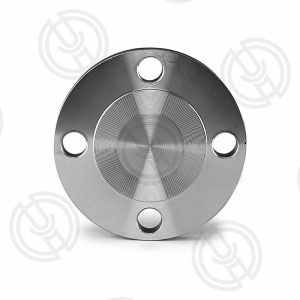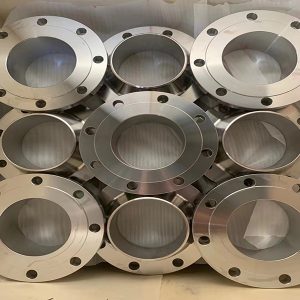Introduction
In the complex world of industrial piping systems, the ASTM A182 F53 flanges stands out as a robust and versatile component, particularly suited for severe service conditions. This super-austenitic stainless steel flange is designed to withstand the rigors of high-temperature, high-pressure, and corrosive environments commonly found in the oil and gas, chemical, and pharmaceutical industries.
One of the critical factors that influence the performance of ASTM A182 F53 flanges is the control of ferrite content. This article explores the importance of ferrite content in F53 flanges and how it impacts their mechanical and corrosion-resistant properties.

Understanding Ferrite Content in ASTM A182 F53 Flanges
Ferrite is a phase in the microstructure of steel that plays a significant role in determining the material’s properties. In stainless steel, the presence of ferrite can affect the material’s strength, toughness, and resistance to corrosion.
ASTM A182 F53 flanges are composed primarily of austenitic stainless steel, which typically contains a small amount of ferrite. The ferrite content is carefully controlled during the manufacturing process to achieve the desired balance of properties.
The Importance of Ferrite Content Control

1.Corrosion Resistance
The primary reason for controlling ferrite content in ASTM A182 F53 flanges is to enhance corrosion resistance. Ferrite can be more susceptible to certain types of corrosion, such as stress corrosion cracking (SCC) and intergranular corrosion (IGC). By maintaining the ferrite content within specified limits, the flange’s resistance to these forms of corrosion is improved, ensuring longer service life in corrosive environments.
2.Mechanical Properties
Ferrite can influence the mechanical properties of stainless steel, including tensile strength, yield strength, and toughness. Too much ferrite can make the material more brittle, while too little can reduce its strength. For ASTM A182 F53 flanges, the right ferrite content is crucial to achieve the necessary mechanical properties for withstanding operational stresses.
3.Weldability
The weldability of stainless steel is also affected by ferrite content. A proper balance of ferrite can prevent hot cracking during welding, which is essential for maintaining the integrity of the flange and the piping system as a whole.
Factors Affecting Ferrite Content
Several factors influence the ferrite content in ASTM A182 F53 flanges:
1.Alloy Composition: The alloying elements, such as chromium, nickel, and molybdenum, determine the phase balance in the steel. Adjusting the composition can control the ferrite content.
2.Cooling Rate: The rate at which the steel cools after heating can affect ferrite formation. Faster cooling rates can result in lower ferrite content.
3.Heat Treatment: The heat treatment process, including solution annealing and precipitation hardening, can influence ferrite content and its distribution within the microstructure.
Methods for Controlling Ferrite Content
Manufacturers employ various methods to control ferrite content in ASTM A182 F53 flanges:
1.Alloy Design: Careful selection of alloying elements during the steelmaking process can help achieve the desired ferrite content.
2.Thermocouples: These are used to monitor and control the temperature during heat treatment, ensuring consistent ferrite levels.
3.Ferrite Meters: These devices are used to measure the ferrite content in the finished product, allowing for adjustments if necessary.
Benefits of Proper Ferrite Content in ASTM A182 F53 Flanges
Maintaining the correct ferrite content in ASTM A182 F53 flanges offers several benefits:
1.Enhanced Corrosion Resistance: Proper ferrite content ensures the flange can withstand the corrosive effects of chemicals and extreme environmental conditions.
2.Improved Mechanical Strength: The right balance of ferrite contributes to the flange’s strength, making it suitable for high-stress applications.
3.Better Weldability: Controlled ferrite content improves the weldability of the flange, reducing the risk of welding defects.

Conclusion
The ferrite content in ASTM A182 F53 flanges is a critical factor that must be carefully controlled to ensure optimal performance in demanding industrial applications. By maintaining the ferrite within specified limits, manufacturers can provide flanges that offer the right combination of corrosion resistance, mechanical strength, and weldability.
As the demand for high-performance materials continues to grow, the control of ferrite content will remain a key focus in the production of ASTM A182 F53 flanges. It is through meticulous attention to detail during the manufacturing process that these flanges can meet the stringent requirements of the industries they serve, ultimately contributing to safer and more reliable piping systems.
